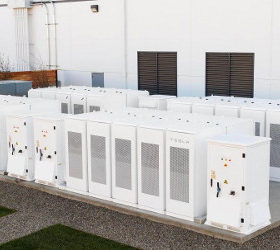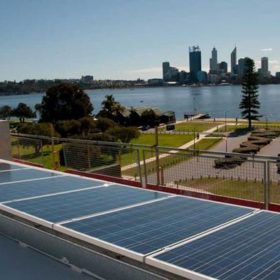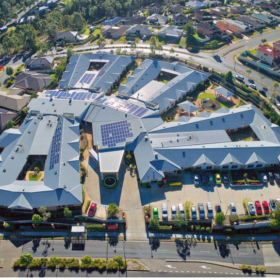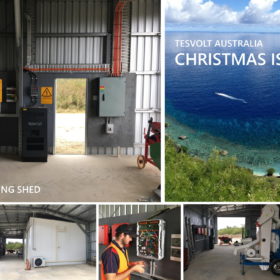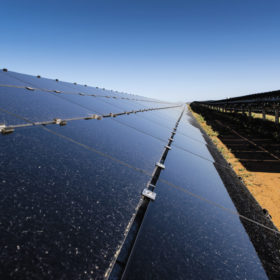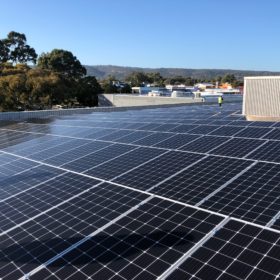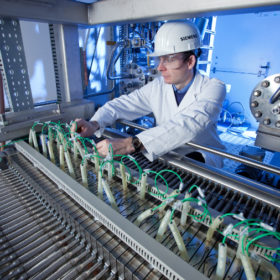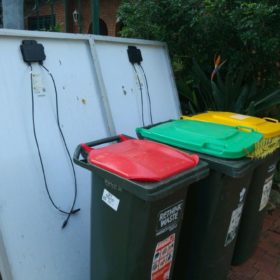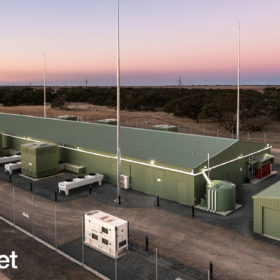Townsville outskirts to welcome 4 MW Tesla battery
Queensland is in line for its first community-scale battery to be installed on Townsville’s outskirts because of the high number of rooftop solar systems and close proximity to electricity infrastructure. The energy storage system should be operating by the end of the year.
Sumitomo acquires WA’s leading solar retailer Infinite Energy
Japanese industrial giant Sumitomo Corporation has fully acquired Infinite Energy, Western Australia’s solar installer and electricity retailer, thus expanding on its local coal-focused portfolio.
Australia to lead world in resi battery uptake in 2019, finds BNEF
Over 70,000 Australian households will install battery storage in 2019, according to the Bloomberg New Energy Finance (BNEF). With the nation’s storage demand set to triple, Australia is forecast to make up 30% of global demand this year.
Renewables turn emissions tide and rooftop solar shoulders heatwave load
The Australia Institute’s first emissions audit of 2019 shows renewables pushing coal aside to reduce Australia’s emissions 20% below the peak recorded in 2008; and the load that January’s high temperatures would normally exert on the grid has been mitigated by high uptake of rooftop solar.
Christmas Island taps into off-grid solar in post-mining land reclamation
As part of a scientific research focusing on agriculture on exhausted mining areas, a seed cleaning shed on Christmas Island is being powered by solar+storage. The switch from polluting diesel has not only brought a low maintenance, silent and environmentally friendly solution to this remote location, but also lowered operational costs nearly fivefold.
Solar will rebound this year with more than 100 GW of new capacity
Wood Mackenzie’s number-crunchers are the latest analysts queueing up to predict a bumper year ahead for PV, with falling prices, rising efficiency rates and booming markets outside China all on the cards. And it could be a make-or-break year for mega-projects, says Wood Mac.
Hanwha Q Cells, sonnen to power off-the-plan solar+storage in South Australia
A property development in South Australia will deliver solar and storage off-the-plan for home buyers. Developer DLH Projects and Natural Solar are partnering on the property development, and will utilize Hanwha Q Cells DUO-G5 modules and sonnen batteries, making it the first multi-site residential development to benefit from the South Australia Home Battery Scheme.
Labor targets green hydrogen exports in billion-dollar plan
The Australian Labor Party has released a National Hydrogen Plan, which involves directing $1 billion in CEFC funding towards clean hydrogen projects, $100 million in ARENA grants for hydrogen technology refuelling infrastructure, and $40 million from the CEFC’s Innovation Fund to help commercialise new hydrogen technologies and businesses. Looking towards clean energy exports, the plan will provide $3 million in funding to Queensland coal port in Gladstone with the aim of creating a hydrogen hub.
Australia’s first solar-panel recycler plans to help green the full life cycle of components
South Australian-based company Reclaim PV estimates it will open Australia’s first commercial solar-panel recycling plant in mid 2019. Its high-energy founders also have a broader mission — to inform better environmental practices throughout the solar value chain.
South Australia welcomes 30 MW/8 MWh battery
Another big battery has gone live in South Australia with the goal to contribute to energy security and reliability as a heatwave puts grid under pressure. The $30 million energy storage system is developed and owned by ElectraNet, as the first battery in the NEM to provide regulated network services and competitive market services.
